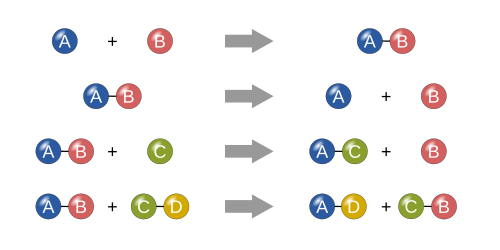Biochemicals
Unveiling the Enchantment: A Visual Exploration of Chemicals
Chemicals, the invisible architects that orchestrate the grand spectacle of the universe, hold a beauty and complexity waiting to be unveiled. Let's embark on a visual journey to explore their structure, classification, and the mesmerizing dance of chemical reactions.

The Microscopic Marvels: Atoms and Molecules
At the heart of every chemical lies the atom, a miniature world unto itself. Each atom, with its unique number of protons, acts as a fundamental building block. These atoms then join hands, sharing or stealing electrons, to form molecules. The way they bond – a waltz of attraction and repulsion – determines the molecule's structure and, consequently, its properties. This intricate interplay between atomic partners gives rise to the mesmerizing variety of chemicals we encounter, from the air we breathe to the materials that shape our world.
Classifying the Chemical Tapestry
To navigate this vast and diverse landscape, chemists have devised a system of classification. One primary division separates chemicals into two broad categories:
Inorganic Chemicals:
These encompass the non-living realm, primarily compounds that don't have carbon-hydrogen bonds as their backbone. Minerals like shimmering crystals, powerful acids and bases, all fall under this category.

Organic Chemicals:
This domain is the playground of life, where carbon takes center stage. These chemicals, often forming intricate carbon-hydrogen skeletons, are the building blocks of living organisms. From the intricate structures of carbohydrates to the vital proteins and lipids, organic chemicals orchestrate the symphony of life.
The Mesmerizing Dance of Chemical Reactions
Chemicals are not stagnant entities. They engage in a captivating ballet known as a chemical reaction. In this breathtaking performance, bonds between atoms break and form, rearranging matter and creating entirely new molecules. Chemical reactions are governed by specific principles, ensuring a balanced act – the law of conservation of mass and energy dictates that the total number of atoms and the overall energy remain constant throughout the transformation.
Understanding chemical reactions is the key that unlocks the secrets of our world. From the controlled combustion of fuels that powers our vehicles to the intricate biochemical processes within our cells, chemical reactions are the engines that drive the world around us.

By peering into the world of chemicals, we gain a deeper appreciation for the intricate dance of atoms, the power of structure, and the mesmerizing world of chemical reactions that shape our universe. Their beauty lies not just in their function, but also in the unseen choreography that governs their existence.
Biochemical Engineering: Harnessing the Power of Biology
Biochemical engineering is a dynamic field that merges biology and engineering principles to design and develop efficient processes for producing a wide range of valuable products. From life-saving pharmaceuticals to sustainable biofuels, biochemical engineers are at the forefront of addressing global challenges and shaping the future of biotechnology.
Key areas of biochemical engineering include:
- Biopharmaceutical production: Developing large-scale production methods for drugs and vaccines.
- Biofuel generation: Engineering microbes to produce clean-burning fuels from renewable sources.
- Food processing and fermentation: Designing efficient processes for food production and fermentation.
- Biomaterials development: Creating biocompatible materials for medical implants and tissue engineering.
- Environmental remediation: Utilizing microorganisms to break down pollutants and purify water.
Biochemical engineers possess a diverse skillset, combining expertise in:
- Biology: Understanding cellular processes, metabolism, and enzyme function.
- Chemistry: Knowledge of reaction kinetics, thermodynamics, and molecular properties.
- Engineering: Principles of unit operations, mass transfer, and reactor design.
The future of biochemical engineering is bright, driven by advancements in:
- Synthetic biology: Engineering biological systems with novel functions.
- Genetic engineering (click here for more information): Manipulating DNA to create desired traits in organisms.
- As we strive for a healthier, more sustainable future, biochemical engineers will continue to play a pivotal role in developing innovative solutions using the power of biology.

For more information, watch this video
